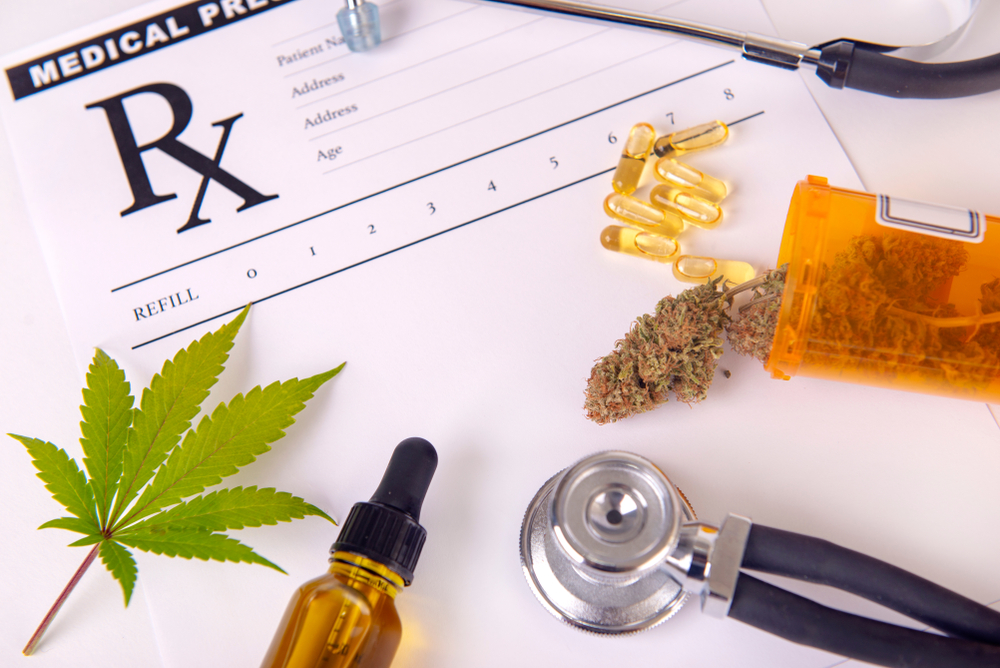Since Utah’s medical marijuana (cannabis) program went live in early 2020, it shouldn’t come as a surprise to lear that tens of thousands of patients in Utah have started using it. There are several qualifying medical conditions written into the law for which a patient may be approved; although chronic pain is likely the condition most often cited by patients. Patients who have had pain for longer than two weeks that is inadequately controlled with conventional treatment(s) can qualify. Concerns about the opioid epidemic have accelerated this development. Since cannabis and its many derivative compounds (cannabinoids) are NOT opioids at all and have a reasonably safety profile(1), it has become amore attractive options and providers alike. They work on a completely different set of receptors in the body called the endocannabinoid system. Many of these compounds, such as CBD, can be purchased legally just about anywhere. Utah’s program allows patients access THC-containing products or even the raw plant.
Anecdotally, many patients report that the addition of THC helps CBD work better. They also state that pain relief can be achieved through the use of low doses, without the high feeling that is so often attributed to its use. There are many patients who feel like it greatly improves their quality of life, activity levels, and the ability to complete daily responsibilities. This includes professionals employed in many different business sectors.
Cannabis research has lagged over the years due to its federally illegal status, but this is changing. There is a rapidly growing body of high quality evidence that suggest cannabis has medicinal value for the treatment of various conditions. This includes a systematic review published in 2017 by The National Academies of the Sciences, Engineering, and Medicine, where a panel of experts concluded that there is sufficient evidence to show therapeutic benefit for the treatment of chronic pain(2). Another review involving over 7,200 study participants found that opioid use was reduced by 64-75% among those who were also using medical cannabis(3). Furthermore, there is evidence that cannabinoids may NOT increase the incidence of respiratory depression when combined with opioids(4,5,6). Continued research is greatly needed, and there is some conflicting data. Cannabis is certainly not a panacea, and claims to the contrary are simply not founded in science.
Utah’s medical cannabis program can be confusing for patients. The plethora of cannabis products, methods of administration, and dosing considerations can also be overwhelming for some individuals–especially those who are completely new to it. As our clinic focuses primarily on procedures to treat chronic pain, we recommend that patients who are interested in medical marijuana go to www.medicalcannabis.utah.gov for further information. We have also recommended that patients contact the Utah Therapeutic Health Center, a clinic that specializes in using cannabis to treat the qualifying conditions and provides a high degree of patient education and support.
References:
1. Ware MA, Wang T, Shapiro S, Collet JP; COMPASS study team. Cannabis for the Management of Pain: Assessment of Safety Study (COMPASS). J Pain. 2015 Dec;16(12):1233-1242. doi: 10.1016/j.jpain.2015.07.014. Epub 2015 Sep 16. PMID: 26385201.
2. National Academies of Sciences, Engineering, and Medicine. 2017. The Health Effects of Cannabis and Cannabinoids: The Current State of Evidence and Recommendations for Research. Washington, DC: The National Academies Press. https://doi.org/10.17226/24625.
3. Okusanya BO, Asaolu IO, Ehiri JE, et al. Medical cannabis for the reduction of opioid dosage in the treatment of non-cancer chronic pain: a systematic review. Syst Rev. 2020 Jul 28;9(1):167. doi: 10.1186/s13643-020-01425-3. PMID: 32723354; PMCID:
PMC7388229.
4. Manini AF, Yiannoulos G, Bergamaschi MM, et al. Safety and pharmacokinetics of oral cannabidiol when administered concomitantly with intravenous fentanyl in humans. J Addict Med. 2015 May-Jun;9(3):204-10. doi: 10.1097/ADM.0000000000000118. PMID: 25748562; PMCID: PMC4449284.
5. Zavala CA, Thomaz AC, Iyer V, Mackie K, Hohmann AG. Cannabinoid CB2 Receptor Activation Attenuates Fentanyl-Induced Respiratory Depression. Cannabis Cannabinoid Res. 2020 Oct 21. doi: 10.1089/can.2020.0059. Epub ahead of print. PMID: 33998863.
6. Wiese BM, Liktor-Busa E, Levine A, et al. Cannabinoid-2 Agonism with AM2301 Mitigates Morphine-Induced Respiratory Depression. Cannabis Cannabinoid Res. 2020 Nov 13. doi: 10.1089/can.2020.0076. Epub ahead of print. PMID: 33998869.


I would like to know if cbd oil can replace the opioid medicine I’m prescribed.
Hi Julie. Thank you for your question. CBD could potentially be part of the solution. It is a little tricky to monitor/dose as it is an unregulated substance. We are always advocates for finding alternative treatments to opioids.
Can I get both medical marijuana and pain pills 12 hip surgeries in the last 3 years plus a broken femur numerous other surgeries. Thank you
Can I get both medical marijuana and pain pills 12 hip surgeries in the last 3 years plus a broken femur numerous other surgeries. Thank you
Cage fusion 10 years ago 3 severe bolding disks work lifting box’s caused several bolding disks
Hi Jeni. We are happy to have our team reach out to you, if you’d like. You can call or text our office at 801-572-1186, or you can email us at info@asappainclinic.com. Have a great day!